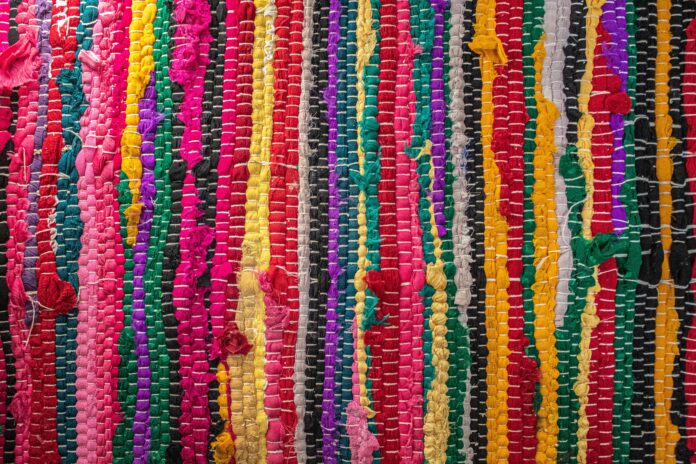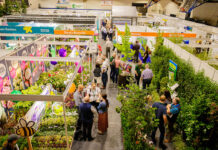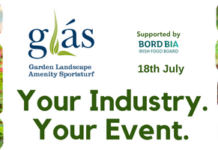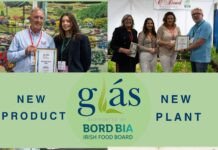Barry Lupton interviews Sarah Prosser, Collective Impact Weaver at Grow It Yourself Waterford.
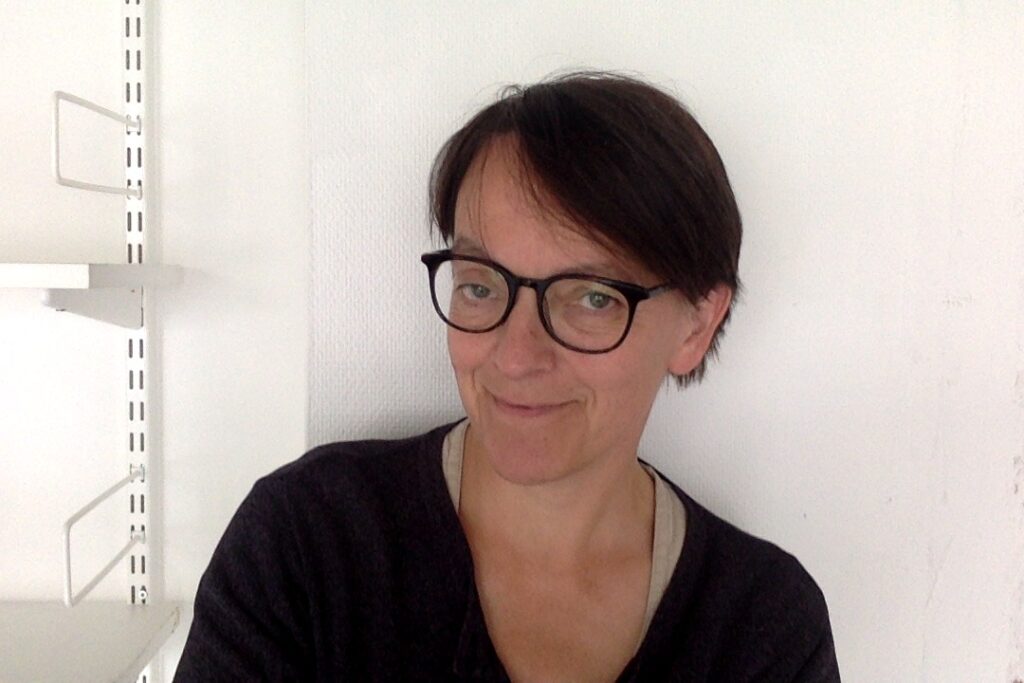

Can you provide a little background on your work prior to engaging with the Bioregional Weaving Lab Project?
It’s a bit of a mad mixture of things, but there is a common thread through it all to do with really seeing, believing and supporting people that want to make change for the common good. Immediately before the BWL project, I was working in Norway (where I lived for over 20 years) supporting community-driven social enterprises, affordable housing policy and an initiative called Partnership for Radical Innovation, which is about how the public sector can work for real long-term systems change. A jazz/oil/geology art performance and the importance of sitting on doorsteps also featured.
You’ve had a varied and interesting career to date. What would you say are the most significant achievements?
Probably the network of neighbourhood incubators, under the umbrella of Norway Unlimited, that proves what can happen if residents are provided with long-term support to start local initiatives and social enterprises based on their own experiences and passions. This work also influenced the whole field of social entrepreneurship and public participation in Norway. I’m also quite proud of the Human Rights Human Wrongs film festival I started that is now pretty impressive, and of an academic article I once wrote about ‘syn-rift sequences’ that has held its own over the years and become a key reference for geologists!
You’re taking a brave step in taking up the post and moving to Ireland. What motivated you to do so?
It doesn’t feel so brave, more like exciting. What motivated me was the chance to work in, and get joy from, the direct contact with a beautiful landscape and the lovely people that live within that, and yet at the same time be linked to a wide international network I knew from before and have real respect for. A second aspect was a desire to get a break after so long in Norway and to move to a country that is perhaps a closer emotional home to Scotland, where I grew up. Finally, I had looked around my flat in Norway and realised that if the time had come when my two children could move out, then so could I.
Where will you be based when you make the move to Ireland?
So far I have been incredibly lucky to have lived with two of the best views in Ireland. First, in a remote cabin near Graiguenamanagh looking out at the Blackstairs Mountains and, as I write, I’m in a ‘homestay’ flat overlooking the mesmerising Tramore Bay and strand. What comes next (July onwards) I don’t know – accommodation is a hard nut to crack in this country. I dream, maybe naively, of a tiny rural cabin turning up somewhere with some contact with nature.
A tough call, but can you briefly explain the intention of the project?
This project looks at bioregions in different settings across Europe, and what it would mean to ‘weave’ local people, projects and places into a kind of movement that gives back to the landscapes and communities. Our vision is a biodiverse and climate positive future with healthy ecosystems, regenerative economies and thriving communities, where solutions that work with nature and communities in landscapes are the norm and scale widely. The mission of the overall project is to mobilise 1 million changemakers by 2025 to overcome systemic barriers and restore, protect and regenerate 1 million ha of Europe’s land and sea, with significant impact on four returns (social, economic, nature and inspiration), by 2030.
The intention would be to weave a tapestry of people and projects across each bioregion, all working collectively to give back to the soil, to society, and to nature, that together generates a kind of collective impact for a positive regenerative future. GIY knows that food empathy and a resilient food system are at the heart of so many aspects of our bioregion and the impact we have on the world beyond, so seeing long-term change through a food lens will be core to our approach.
The BWL also builds on recent trends that acknowledge the most important kind of positive change can emerge when we build ecosystems that support what happens between people and social/eco-projects and innovations: i.e. relationships, trust, and the sense of a common purpose, combined with the absolute necessity to work through local and place-based communities with their own cultural and contextual wisdom.
Can you provide a little insight into how the project evolved?
Mick Kelly at GIY has been working towards a food system that is more resilient, fair, and sustainable for over a decade now. He is also an Ashoka Fellow – part of a network of over 3,600 such Fellows making a huge social and ecological impact globally. A gathering of Ashoka Fellows working on themes related to climate and biodiversity was brought together at an event called ‘Weaving for a Thriving Planet’. The concept of Bioregional Weaving Labs grew out of this, as a pragmatic way to link locally-driven change with knowledge and learning networks on a European scale.
Who are the main partners of the project?
The main partners will be the co-weavers and changemaker community of the Waterford bioregion: in particular farmers and local communities. In Europe, the coordinating partners are Ashoka, Commonland, The Presencing Institute, and others. There are local partners in each Bioregion: we currently have five Labs in different settings, from an arid setting in Spain, a forest area in Romania, and the reindeer and forests of Sweden. Waterford BWL is an agricultural setting with the potential for more regenerative practices on several levels.
What is your role in the project and how do you see it being articulated in Ireland?
My role is called a ‘weaver’, a word that is gaining some traction in the world of social innovation. A weaver is someone who has the skill-set (practical tools, knowledge, and relational) to support the emergence of new collective ways of making an impact – in a way that is truly rooted in local communities and bioregions, and at the same time linking to decision-makers and national policies so that we can make systemic long term change. My days are filled with individual conversations with farmers or officials or residents, with nature explorations and with a lot of analysis and attempt to connect dots – in our bioregion and with our international network partners.
The project uses a framework of four primary returns: Inspiration, Natural, Social and Financial. My role is also to identify, in partnership with key stakeholders, what these might look like and how we will know we are making the change we believe is both possible and urgently necessary.
How do you see the project being rolled out?
The earliest stages are described as a ‘co-sensing’ phase – basically enquiring, actively listening, learning and feeling what might be relevant to introduce into conversations with farmers, officials, schools, parents, policymakers, volunteer groups and professional bodies. Then we invite stakeholders to join us in deeper dives to visualise their positions in a complex system and visualise how systemic barriers might be overcome and new solutions emerge.
Pragmatically, we see a need to have local supporters and funding to match international support, and then we can release more local potential, for example through financing dedicated time from co-weavers. The idea would be to also attract other forms of in-kind support to build a good ‘backbone organisation’, essential in any collective movement. We are simultaneously focussed on how nature-based solutions and social innovations might be supported to replicate and scale within the bioregion, or between the different Bioregional Weaving Labs across Europe.
What do you see as the primary challenges in successfully delivering the project?
It isn’t the easiest project to explain, even if people often cheer enthusiastically about the overall ambitions. It depends on trust-building and that takes time. Some people are worried about the time and resources they are being asked to give up – and if it is worth it. A shift in focus from inventing tangible solutions to problems to one where the relationships between projects and people are key is something that can take time to bring people on board.
You mentioned the challenge of fragmentation in a recent lecture. Can you explain how it is negatively impacting positive change and how the project might serve to address it?
Fragmentation, societal and professional silos, unconnected dots and fragile, distributed ecosystems – exist everywhere, and they are talked about often as one of the major hindrances to working in ways that give joined-up and relevant solutions we need for the complex crises we face today.
I have been plotting the locality of nature-based solutions, organic farmers, farmers’ markets, school projects, social entrepreneurs and other relevant actors on a big map in the GIY office. There are a fair few out there, but they are strikingly tiny compared to the blank areas between. Visualisation of this kind might help us address it with more urgency. The empirical insights from our international partners and the other Bioregional Weaving Labs regarding how to pragmatically co-create fair and inclusive collective impact initiatives are also at the heart of how we hope to go about this. We are lucky enough to be working with global leaders on these topics – and I hope we can pass that knowledge on to local communities in the Waterford bioregion in a way that isn’t at all about telling them what to do, but which rather supports them to make more out of what they are already passionate about and already engaging with.
What is the timeline for the project?
An initial phase of six months, until October 2022. After that, if funding is secured, four years of an established bioregional weaving lab with an associated social/eco-innovation fund to help good initiatives grow. We are hopeful of a co-financed solution – partly from international partners who are interested in the synergy effects of the wider European BWL network, and local Irish funders who are keen to see Ireland and Waterford at the forefront of exploring the potential of collaborative innovation for better bioregion in which everyone thrives and the ecology flourishes.
What opportunities exist for people to engage with the project?
A weaving project depends on engagement in many different ways – knowledge and funding might seem the most obvious, but even more critical is the willingness of local existing projects and people to be open to being part of something bigger – something with a common intent for all the people and places involved. They can then engage in ways that make whatever it is they are already doing be woven into a more robust whole. This might involve a common way of monitoring social/eco change or attending enough collective gatherings to build a sense of solidarity and motivation to work around a series of coordinated milestones.
In many ways, the wider horticulture community view themselves as custodians of the landscape and the project will resonate deeply with them. Do you see a role for the community, either collectively or as individuals?
The horticulture community has access to many of the key elements that will get us where we will need to go – and where so many people are now interested in going. I was speaking to a farmer couple whose son has returned from abroad and is keen to transfer their small family farm from beef and dairy to horticulture. The parents are super-supportive and they are currently in the first year of testing what is possible. They want to learn how they can do it in ways that follow regenerative practices and are keen to learn from others that have gone before or have ideas about how to do it. We might be at a tipping point in seeing a shift from different sectors into regenerative horticulture practices – and your community is right there at the heart of it.
What advice do you have for horticulture professionals wishing to engage with you and the project?
We are establishing ‘BWL Support Circles’ at the European and local levels. These aspire to be global and local community respectively of committed leaders and individuals who specialize in place-based systemic change for planet and climate, catalyzed by the Bioregional Weaving Labs around Europe. There will be opportunities to join meetings, field-trips, peer-peer learning and access to knowledge, stories and inspiration. Future impact investing opportunities in nature-based solutions and social innovations are another possibility. If anyone would like to join these Support Cirlces I can happily share more information about how it works.
If you are in the Waterford bioregion – the boundaries of which we have made a first pass attempt at mapping through overlays of soil types, water catchments, and human habitations, meaning the bioregion area spills out of the county boundaries and into East Cork and West Wexford – then please get in touch directly and we can talk (co-sense) about what kind of engagement would be most exciting and interesting – we’d would love to have you in the collective and learn from what you are doing.
If you live outside of the bioregion, but want to be part of making this kind of collective change happen and/or learn from what we are doing concerning your work or bioregion, then again get in touch and join our wider learning community.
If you have access to funds and want to be at the forefront of innovation through food, collaboration and collective impact – you know where to find us (at GIY).
If you could wave a magic wand, what would be your most aspirational and idealistic outcomes of the project?
A sense of belonging, identity, agency and pride in every single citizen in the bioregion – both in terms of loving the nature they are connected to and knowing it is being looked after in ways that are in harmony with the planet. To have a public-social infrastructure that supports this through buy-in from every institution, and a commitment that they will work together so that every child grows up a changemaker. To see spaces such as community kitchens, rural food distribution hubs, truly inclusive job opportunities and meeting places with support structures for small enterprises and public participation. All of this nestling in landscapes that glow with nature in a way that makes people realise that it will be regenerating our soils and seas for generations to come. ✽



